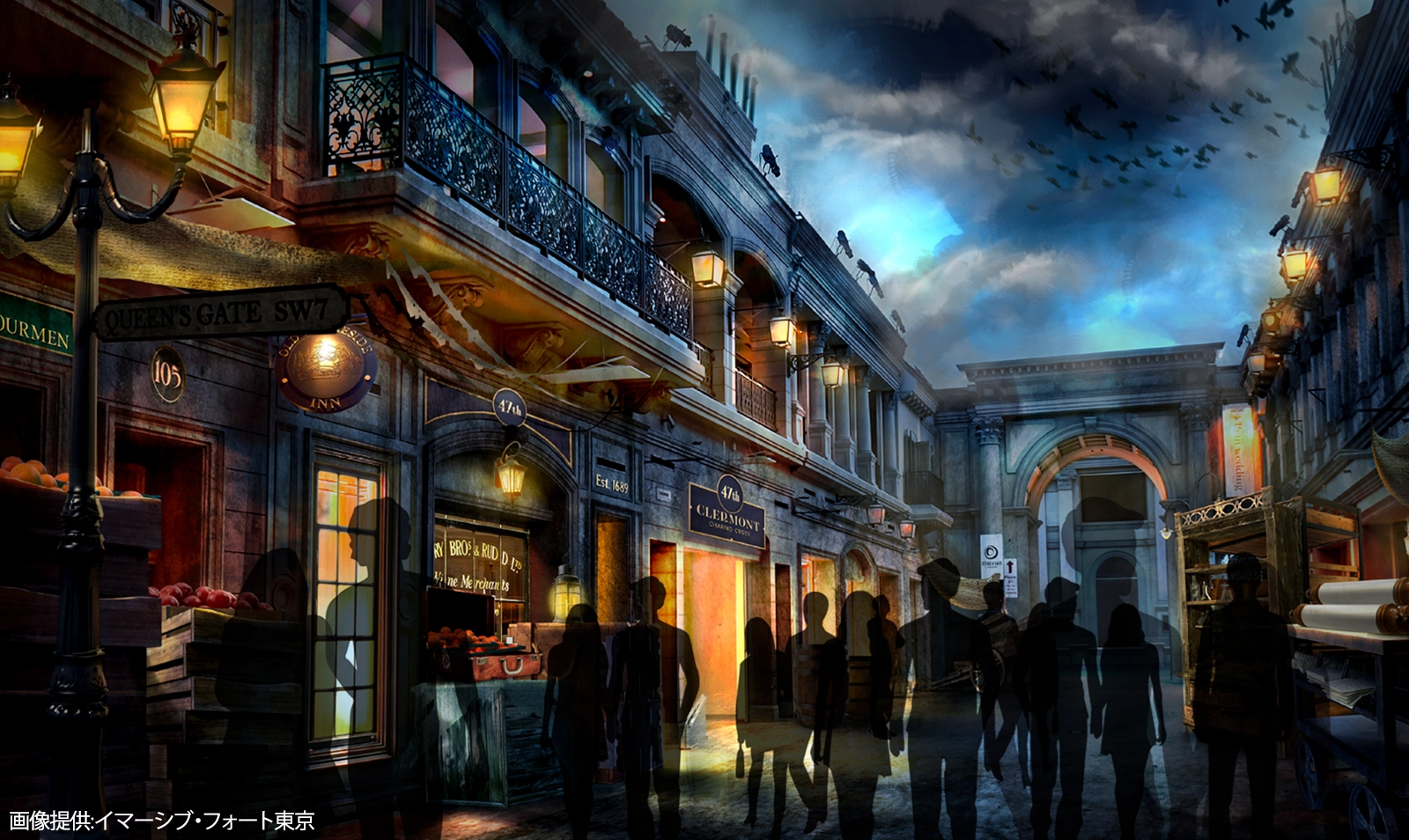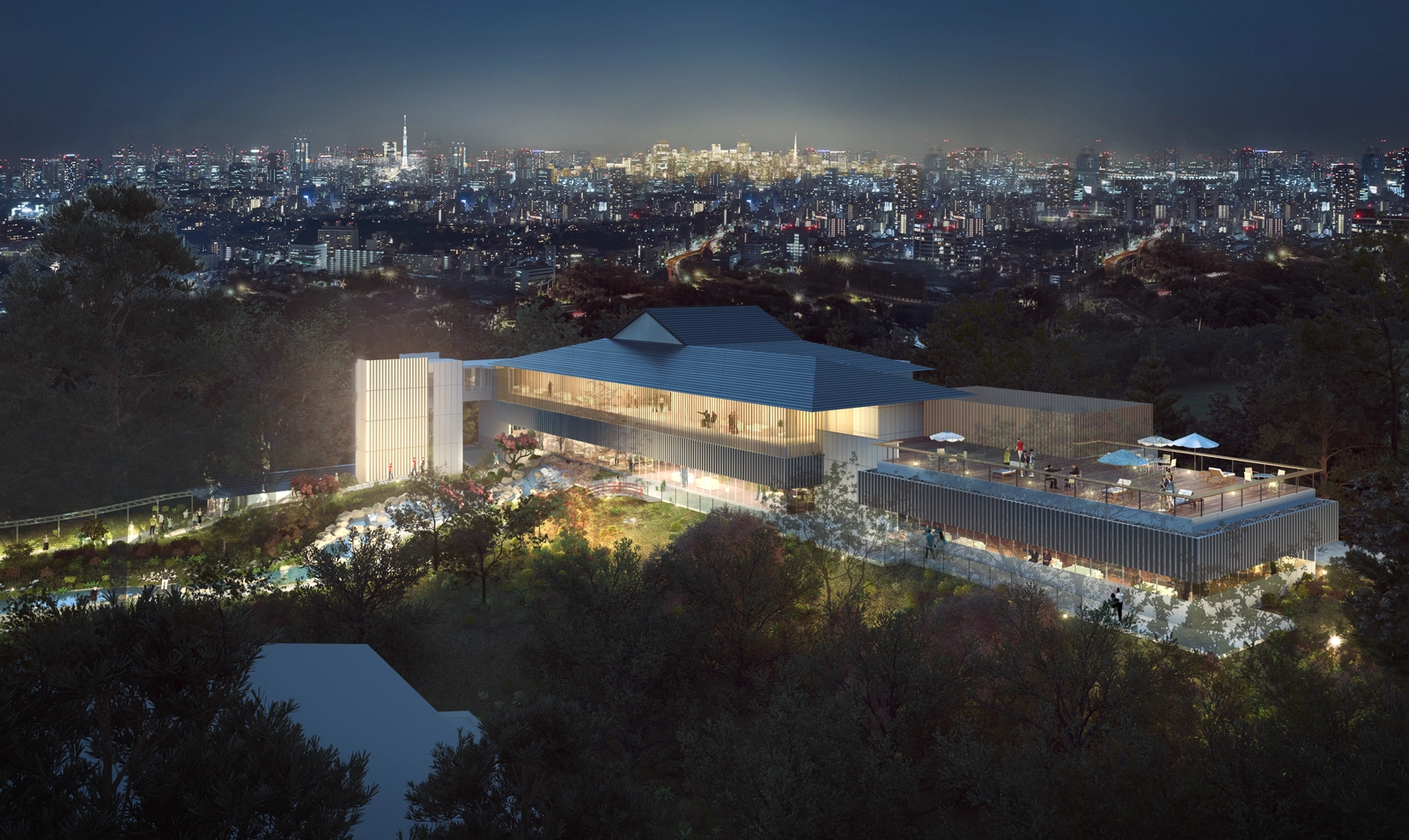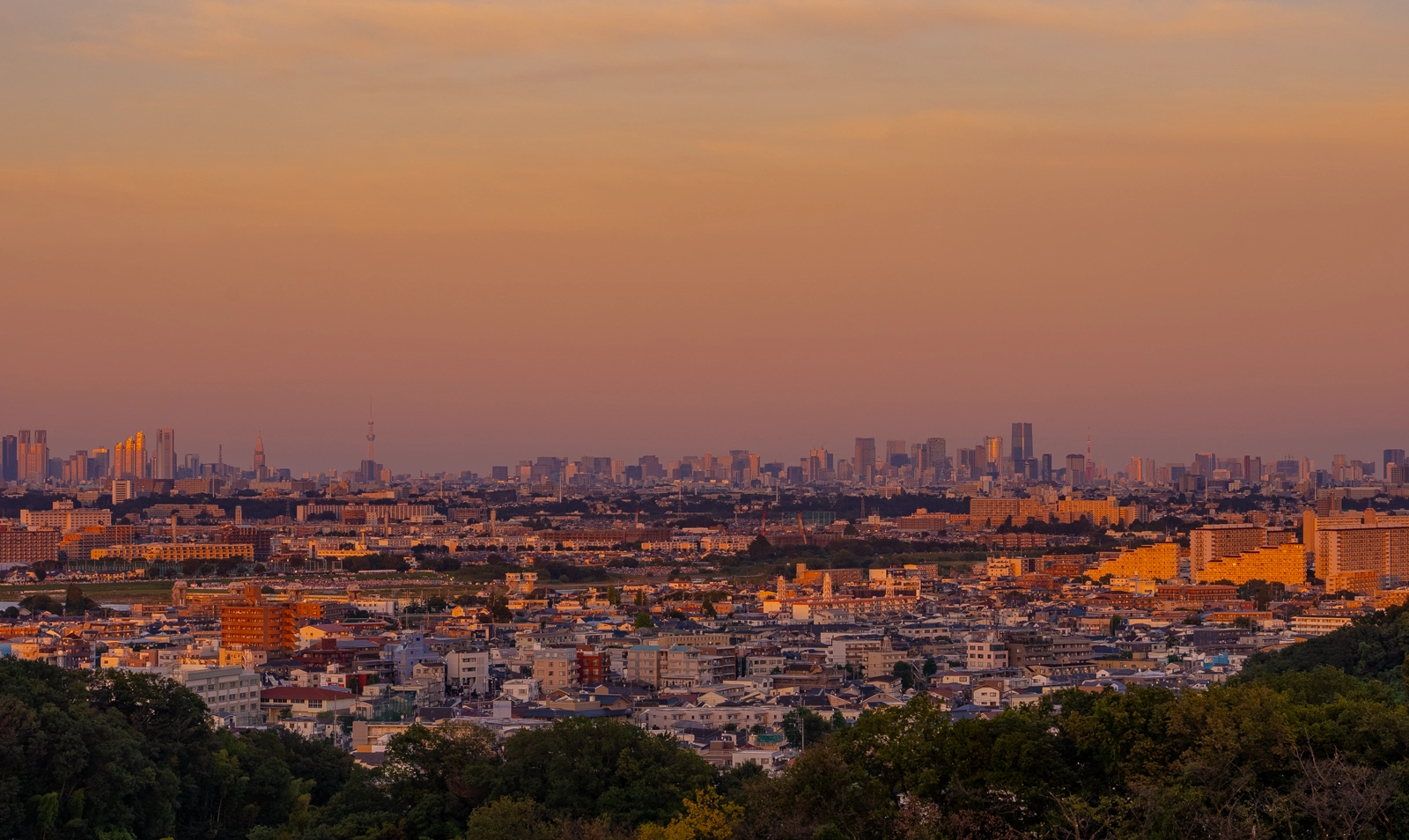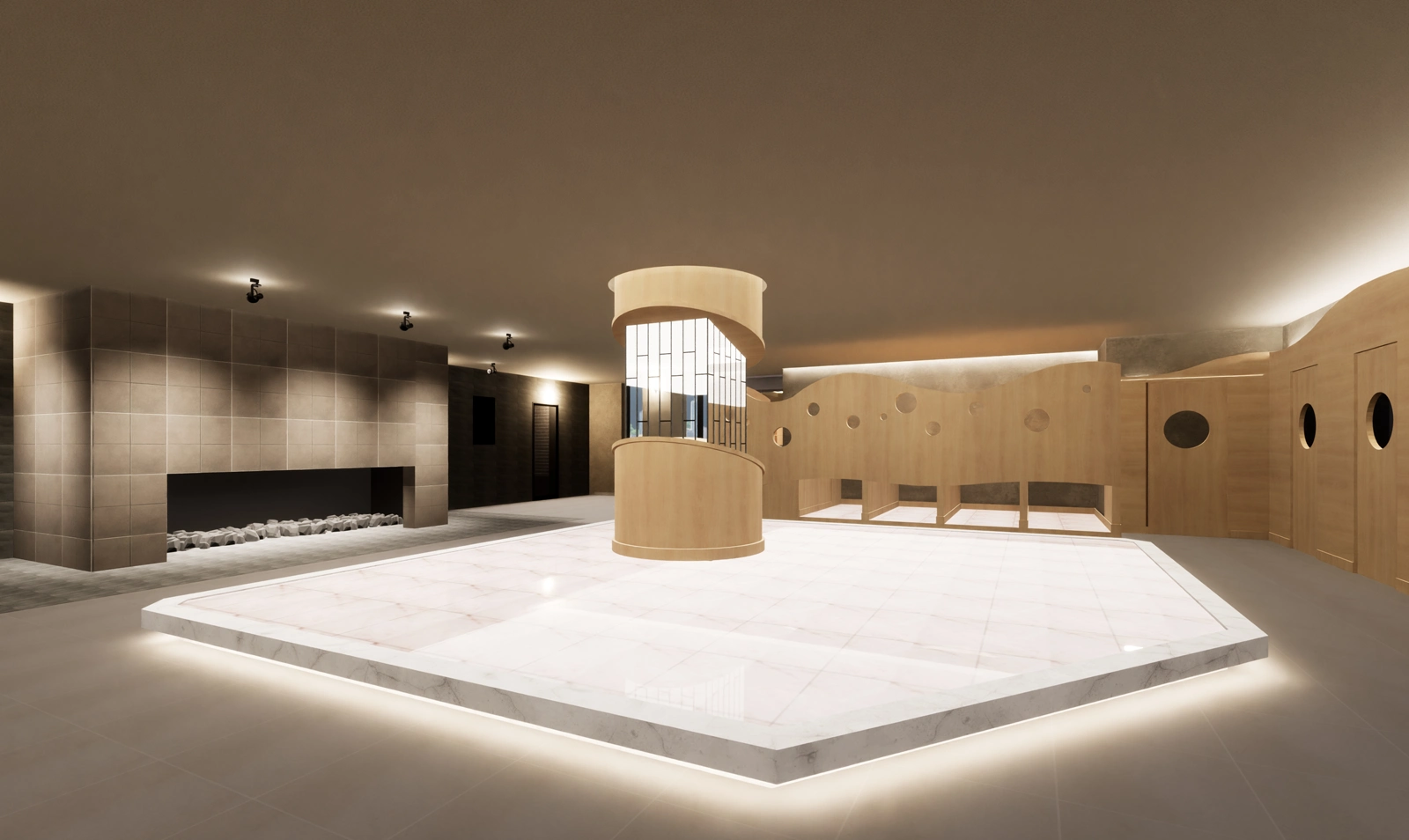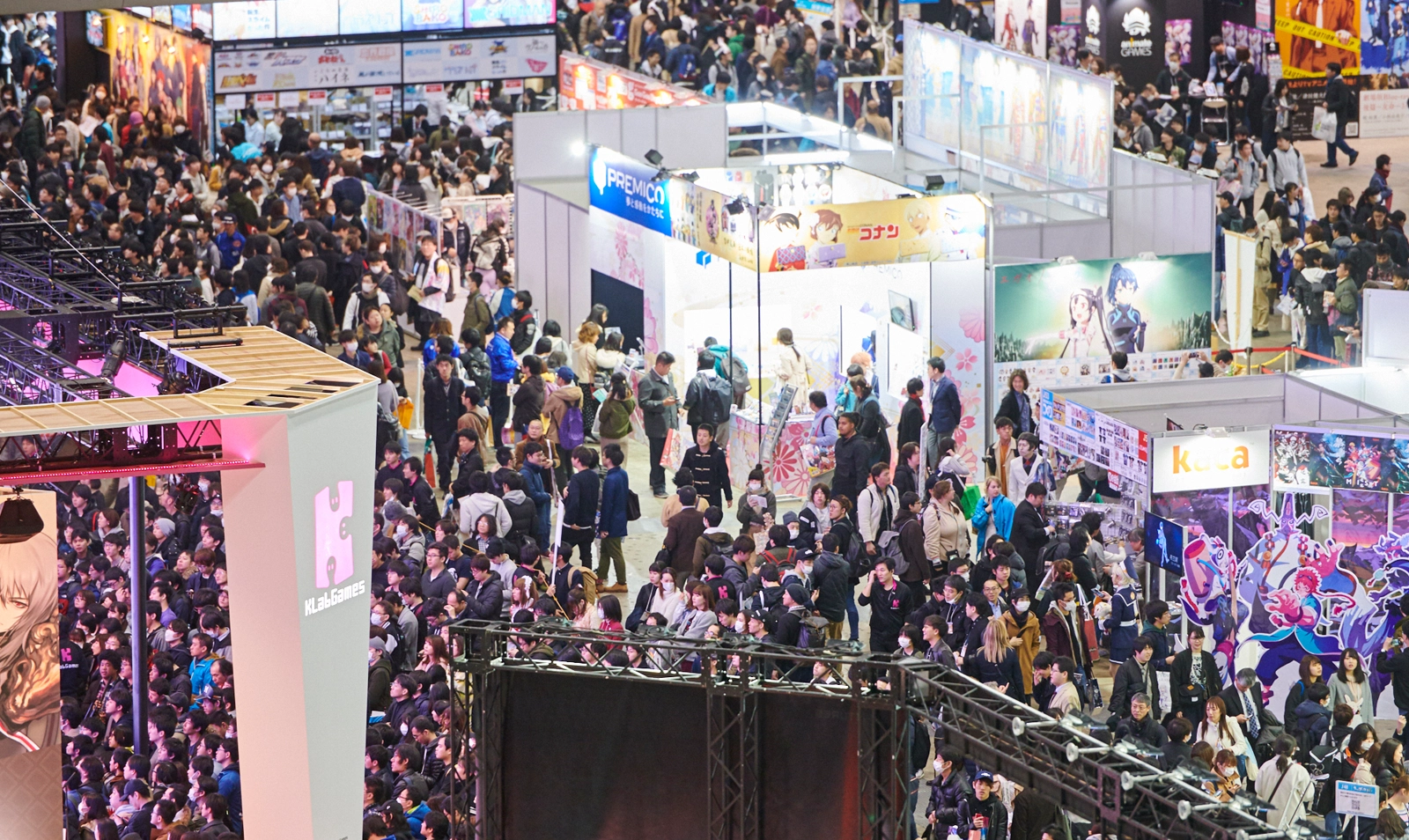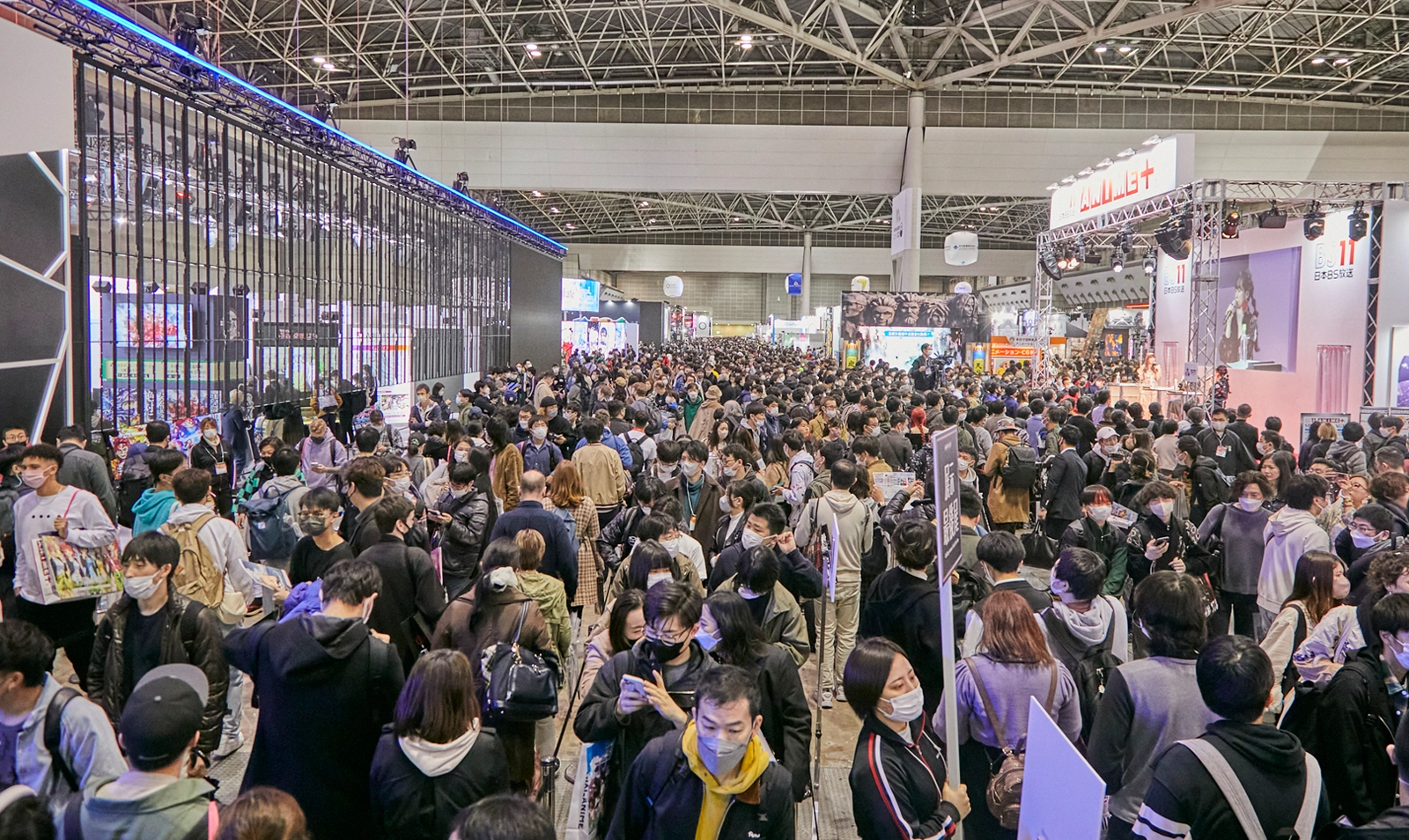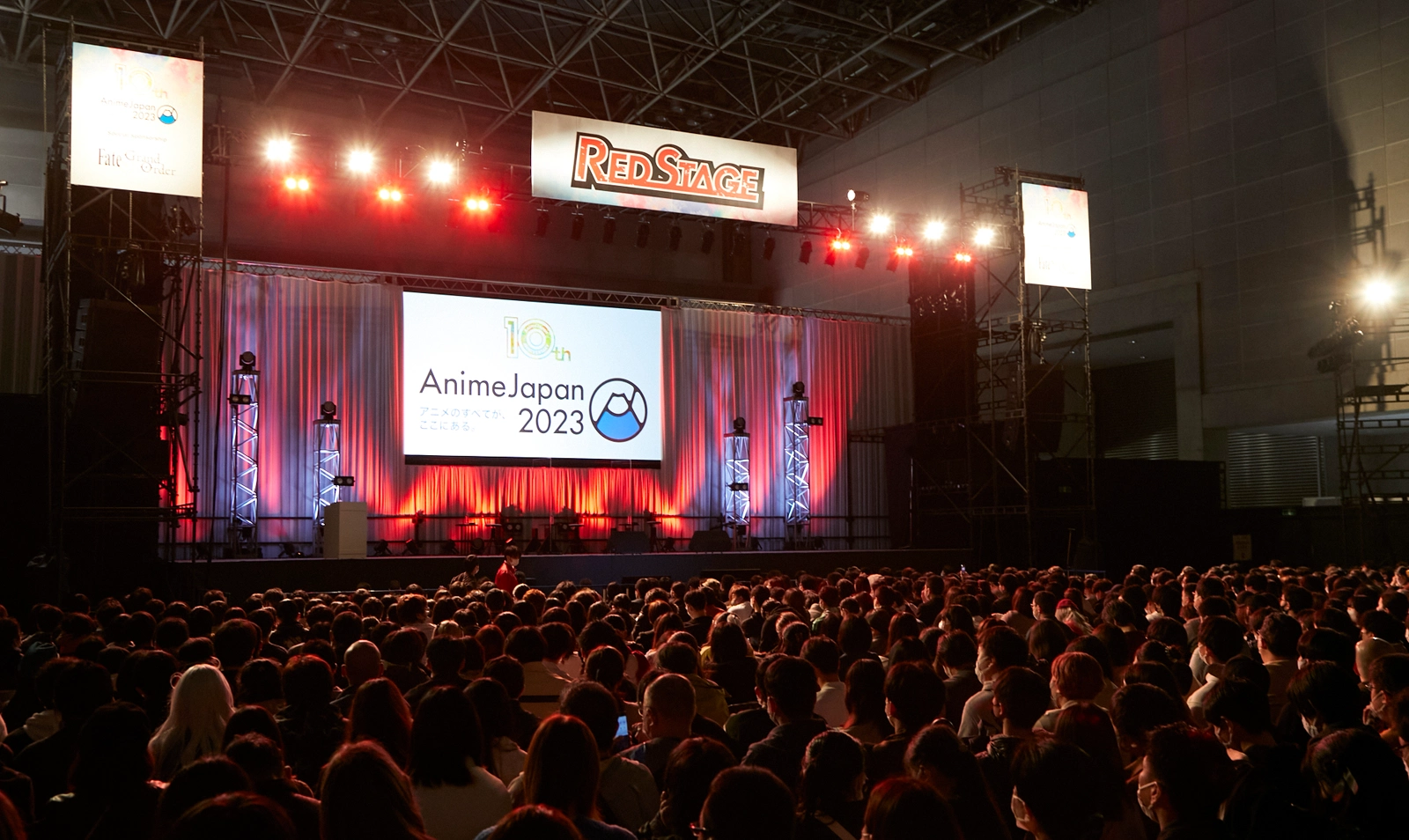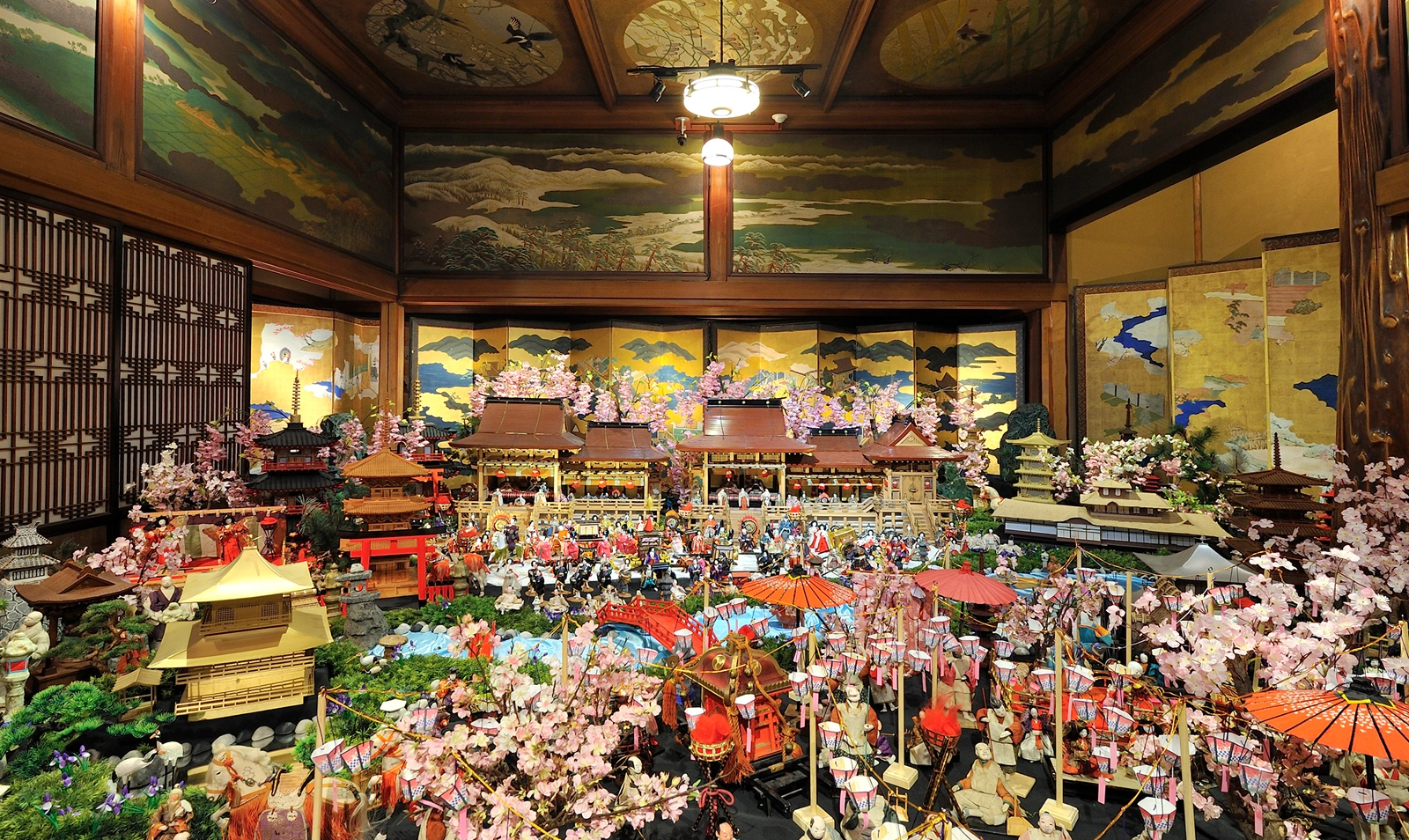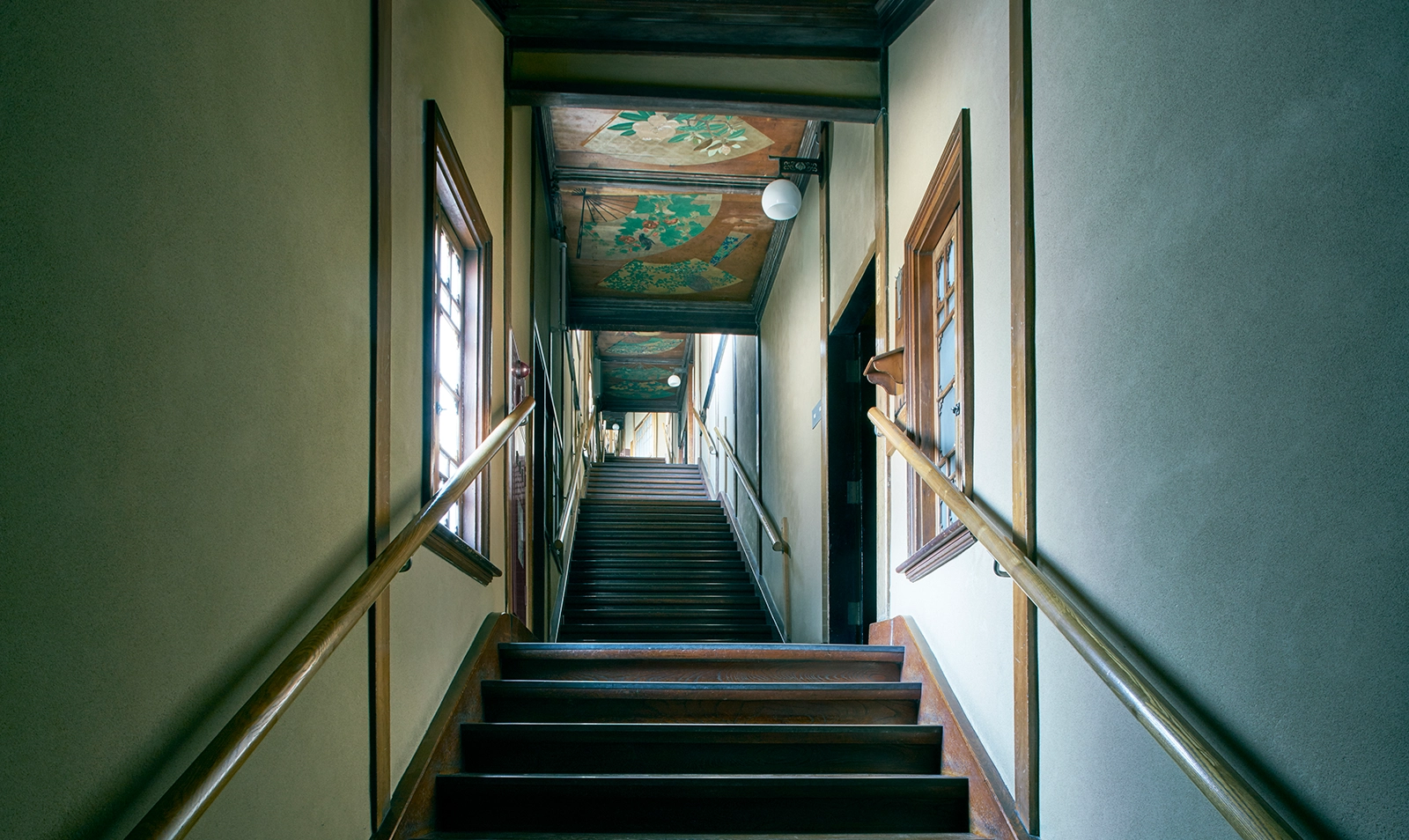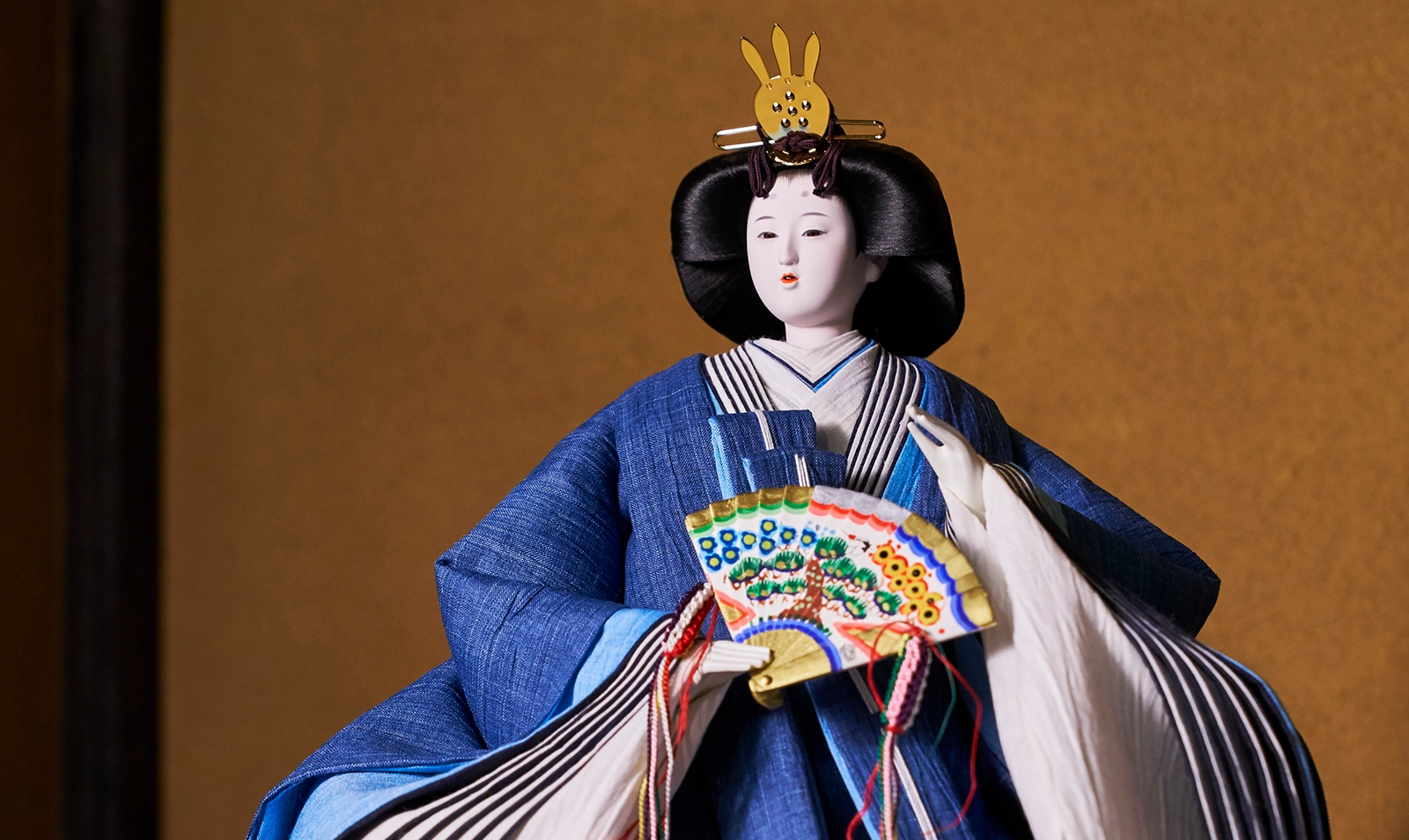Special Feature:
Winter turns to spring in Tokyo
A Cherry Blossom Journey
Subscribe
Download

New sensations at the world's first immersive theme park
March 1, 2024 Odaiba Facility
City vistas from a new hot spring spot
March 2024 Southern Tama Area Facility
The largest event of the anime world
March 23-24, 2024 Ariake Event
Enjoy the Hina Doll Festival at a spectacular historical site
January 20-March 10, 2024 Meguro ExhibitionWinter turns to spring in Tokyo
A Cherry Blossom Journey
Cherry blossoms, known as sakura in Japan, are a sight many travelers to Japan yearn to see. Since time immemorial, people far and wide have been fascinated by the pink blossoms reaching full bloom as the heralds of spring. The best season for the classic variety, Someiyoshino, is from late March to early April, but depending on the weather, peak times may differ, making it a challenge to perfectly time a trip with the fickle flower. However, hundreds of different sakura species thrive in Japan with each type blooming at different times. In Tokyo, a range of cherry blossom varieties unfurl over a relatively long period from February to late April.
To help make the most of this spectacular season, here are the best sakura spots in Tokyo, from age-old favorites to hidden gems.
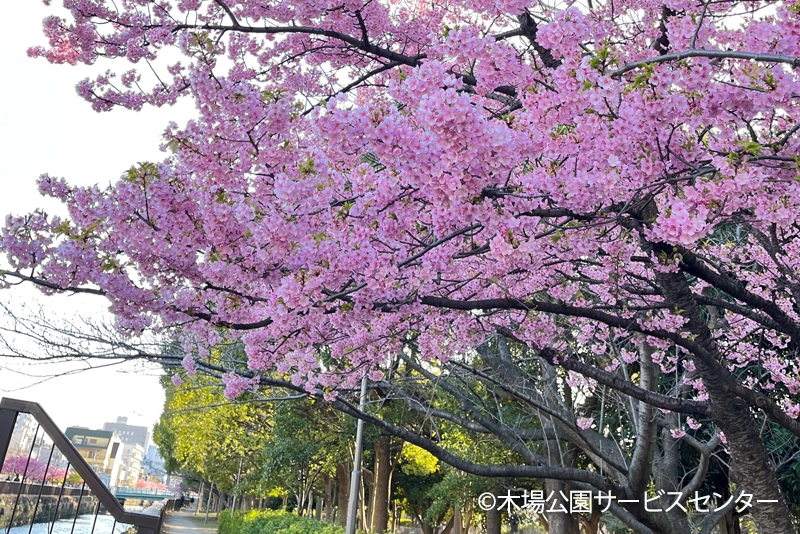
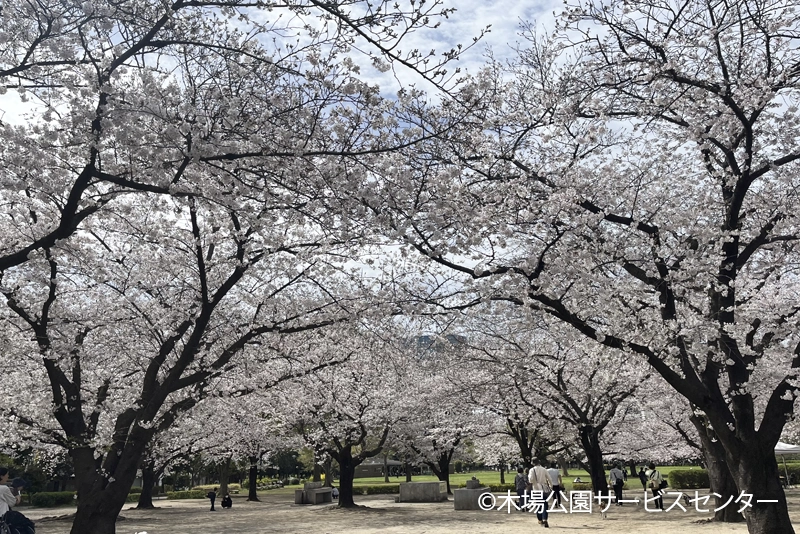 Area: Fukagawa (mid-February to early April)
Area: Fukagawa (mid-February to early April)
Kiba Park is renowned for the famous, early blooming variety of sakura known as Kawazu cherry blossoms. About 80 Kawazu cherry trees line the promenade along the Oyoko River in the park’s southeastern area. A deep pink hue and long viewing period set these blossoms apart. The flowers usually start to open in mid-February and stay in bloom until mid-March. Also, within the roughly 24-hectare park, about 240 Someiyoshino cherry trees reach their peak just as the Kawazu petals begin to fall. Be sure to find the right angle to fit TOKYO SKYTREE and the famed flowers in a single shot. With the Museum of Contemporary Art Tokyo and the retro vibes of the Monzen-nakacho neighborhood nearby, the area is perfect for a stroll before and after viewing the blossoms.
https://www.tokyo-park.or.jp/park/format/index020.html (Japanese version only)
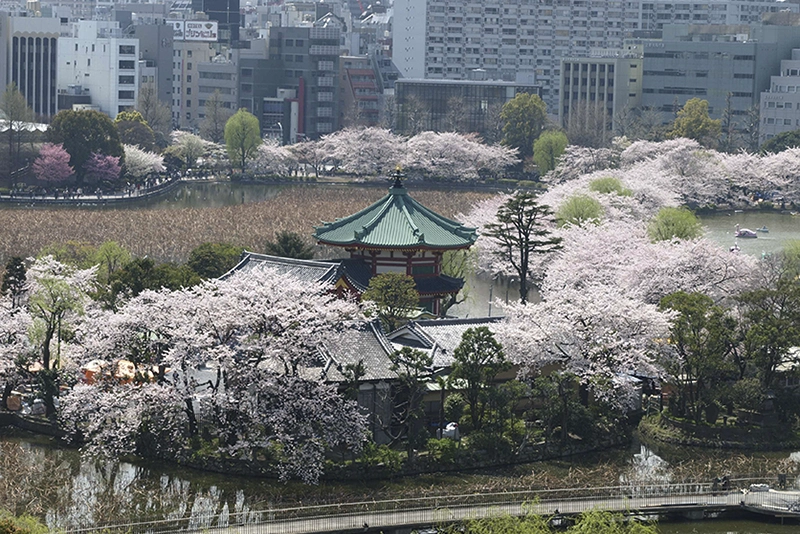
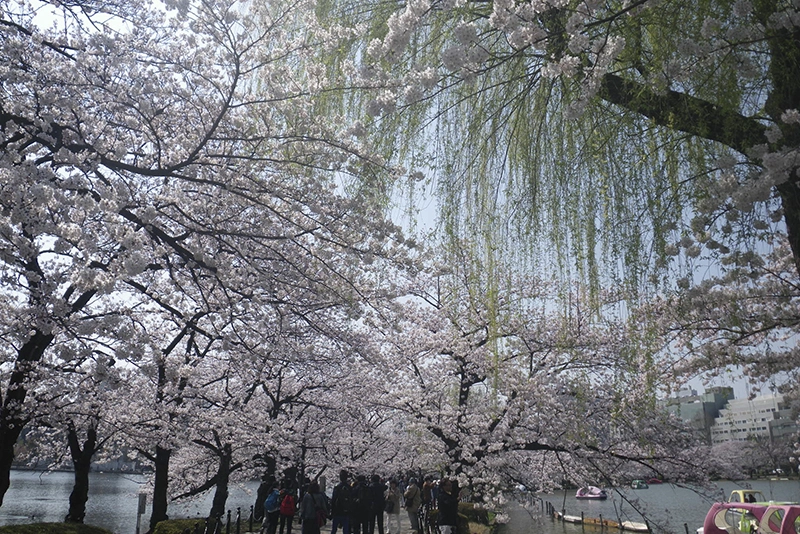
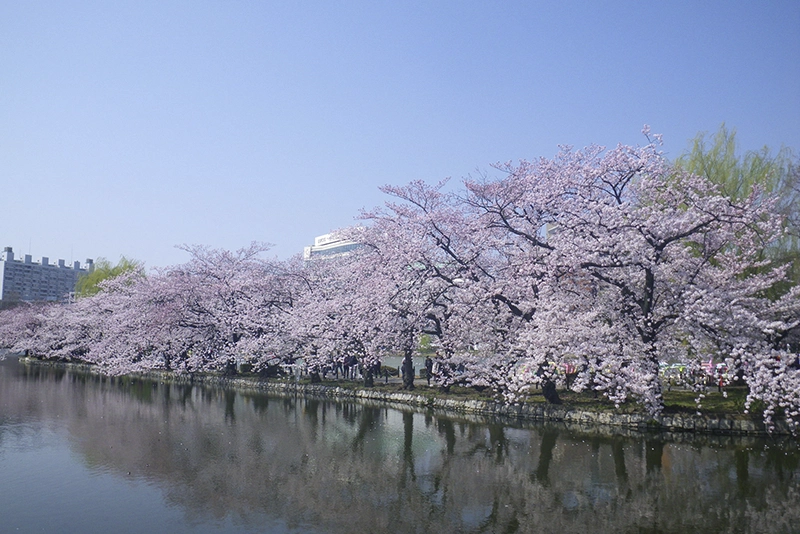
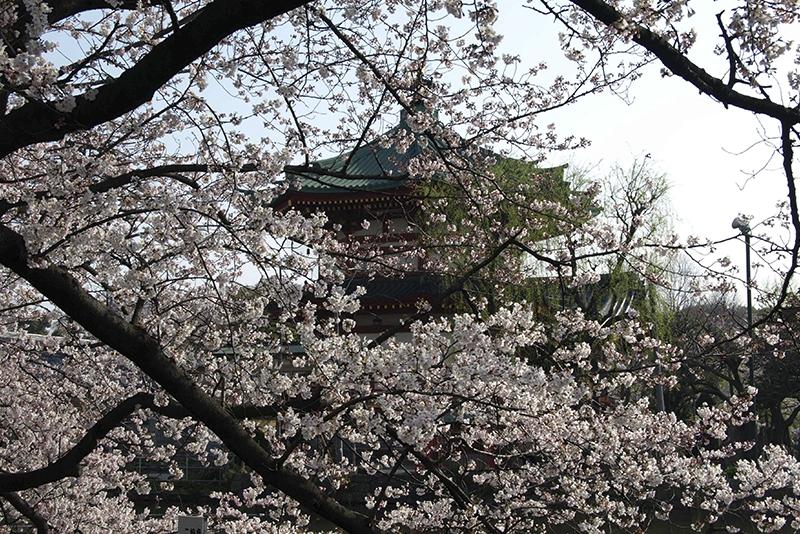
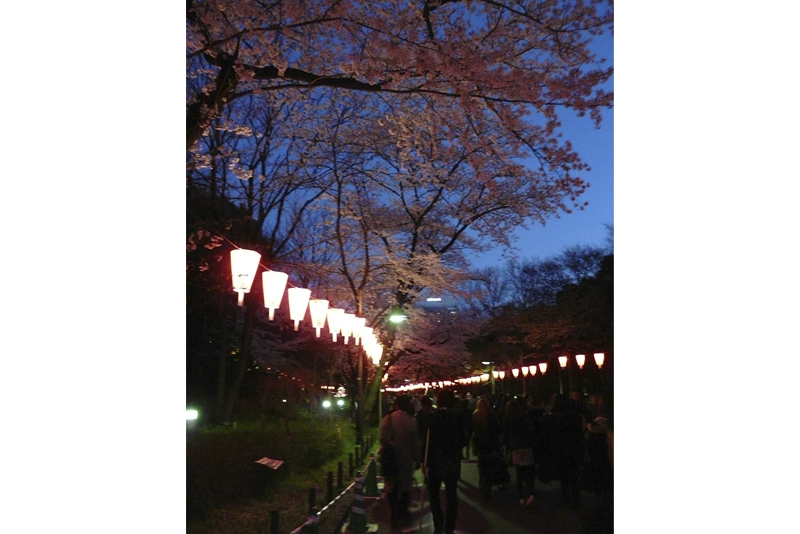
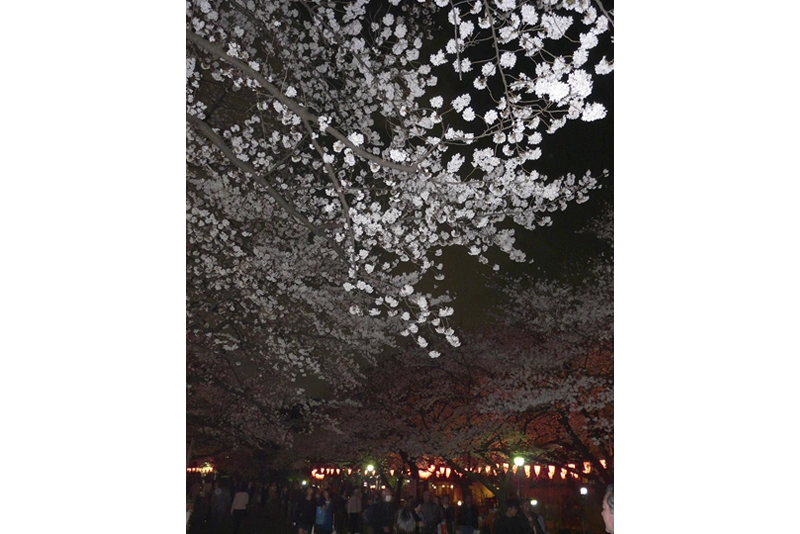 Area: Ueno (early March to late April)
Area: Ueno (early March to late April)
One of the city’s preeminent cherry blossom viewing spots, visited by 3.3 million people every season. The history of sakura in Ueno dates back to old times. The story is said to begin in the mid-17th century when Tokugawa Iemitsu, the 3rd Shogun of the Edo shogunate, transplanted cherry trees here from Yoshino in Nara Prefecture, a celebrated sakura spot of the day. From late March to early April, the blossoms in Ueno are lit up at night, drawing throngs of admirers. Among the roughly 1,200 cherry trees in the park, early blooming varieties can be enjoyed from the beginning of March.
The dark pink Kanzan Yaezakura (double cherry blossoms) species and other late blooming varieties are planted all around Shinobazu Pond. These large flowers are a sight to behold, with some having over 50 petals. Gazing at these pink floral clouds from a rowboat on the water is also highly enjoyable.
https://www.kensetsu.metro.tokyo.lg.jp/jimusho/toubuk/ueno/en_index.html
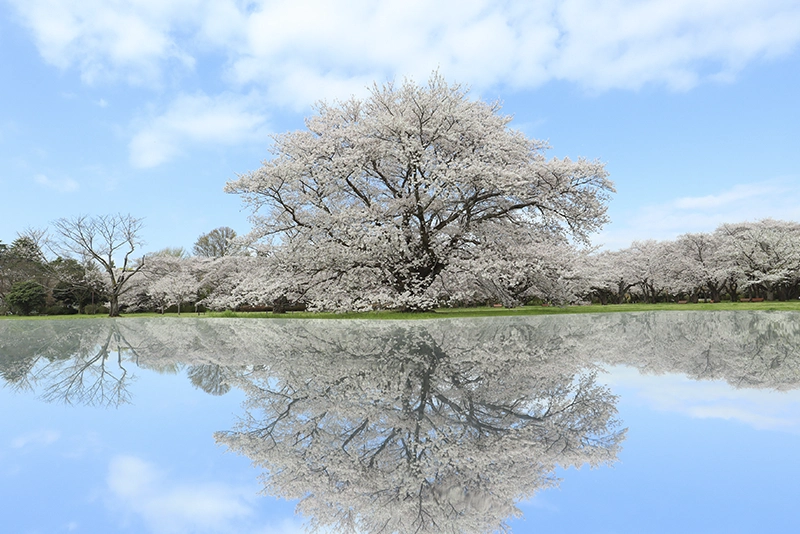
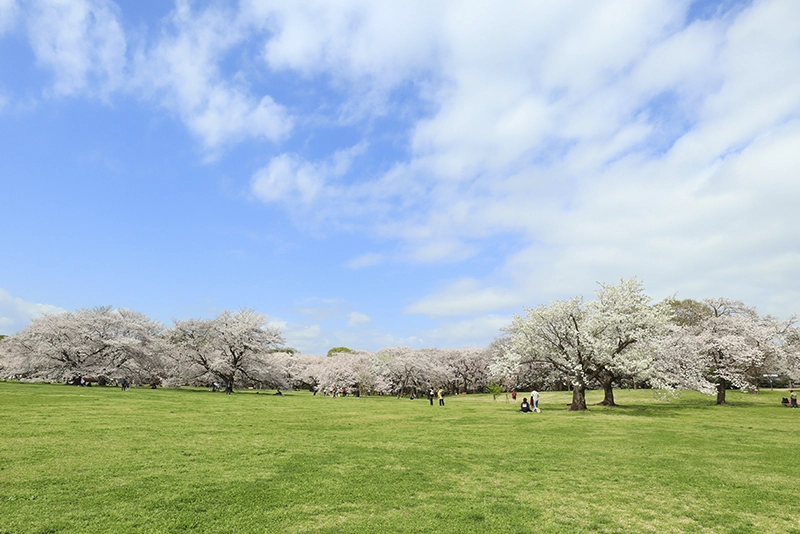
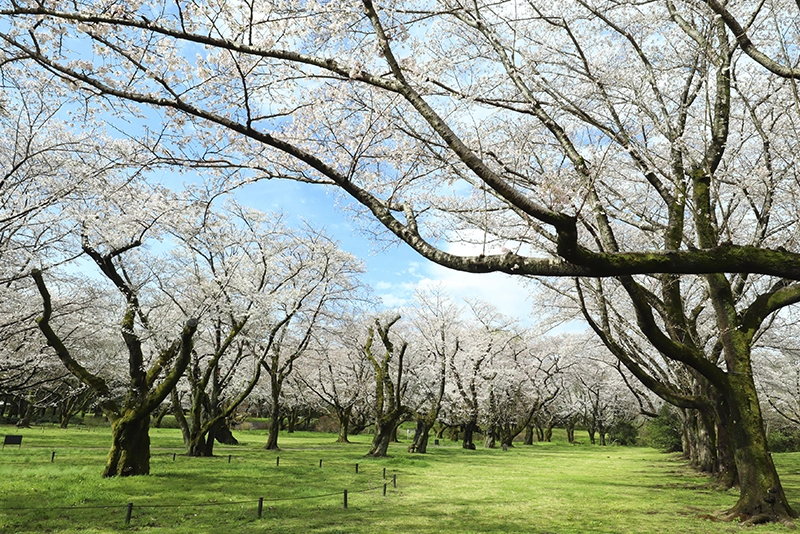
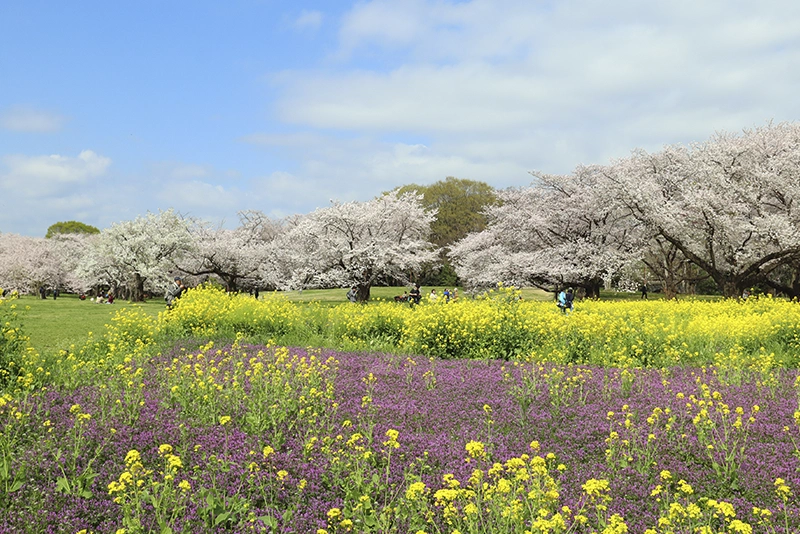
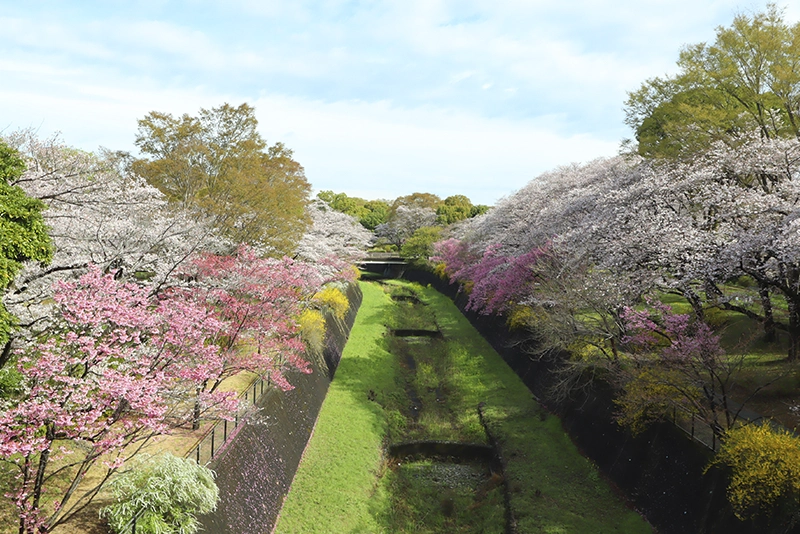 Area: Northern Tama Area (mid-March to mid-April)
Area: Northern Tama Area (mid-March to mid-April)
This vast park in Tokyo’s suburb of Tachikawa is home to around 1,500 cherry blossom trees within its 180-hectare grounds. Approximately half are of the Someiyoshino variety, with many large trees in the Cherry Blossom Garden over 50 years old, some with overhanging branches dangling bunches of blossoms right before your eyes. Next to this garden, a field of yellow “nanohana” (canola flowers) bloom around the same time. Someiyoshino are joined by 30 other varieties growing on the grounds, from early to late blooming types, with the combination stretching the hanami (cherry blossom viewing) season from mid-March to mid-April.
https://www.showakinen-koen.jp/guide-english/
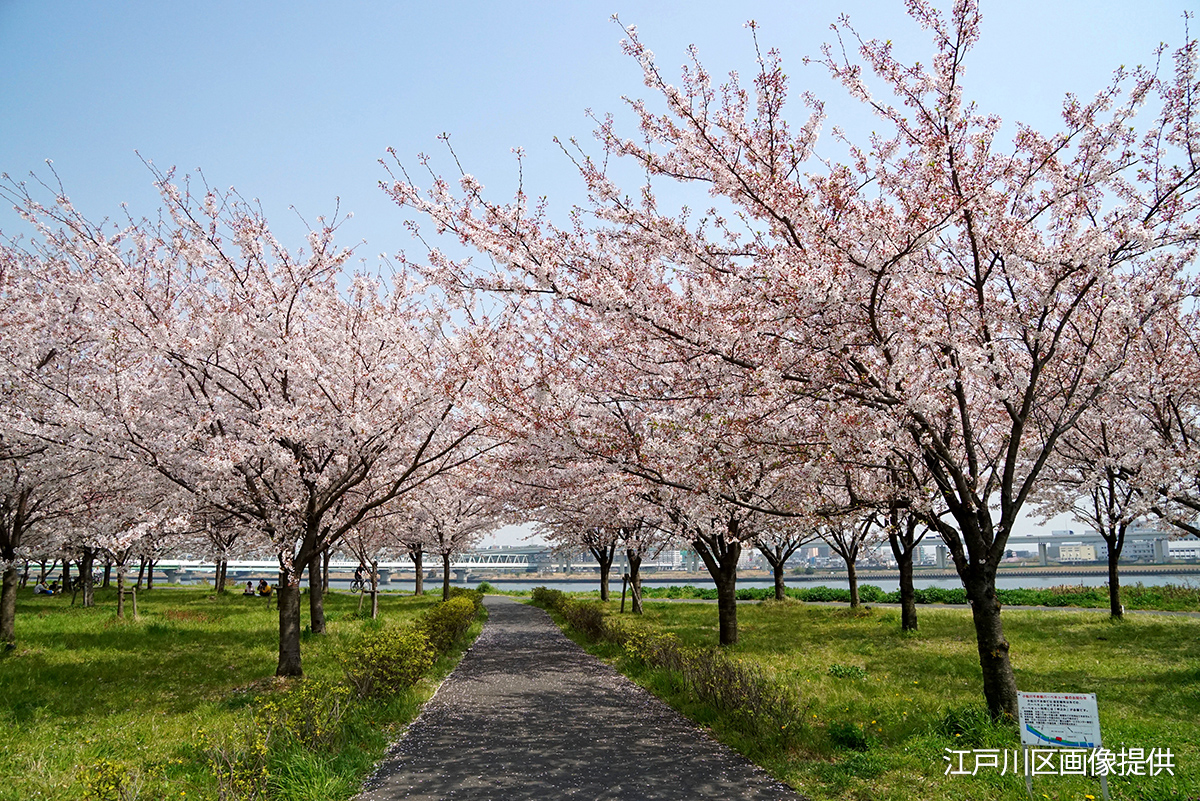
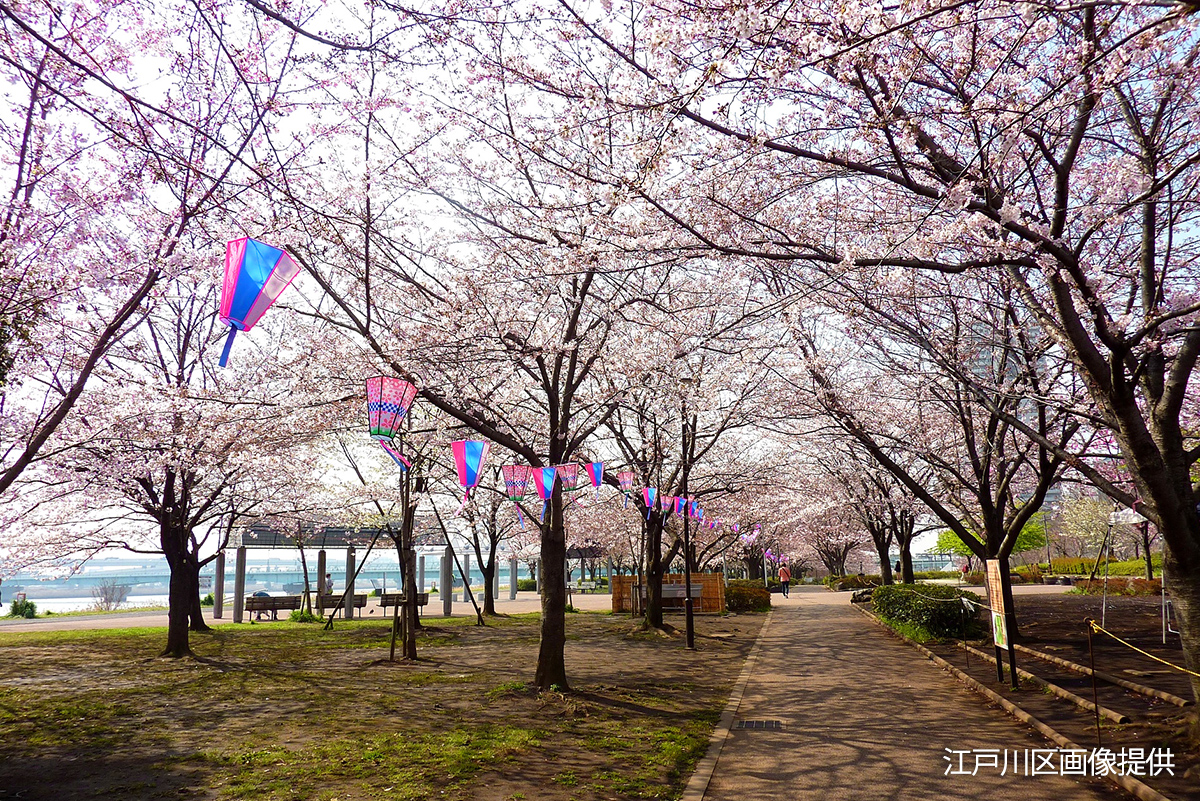
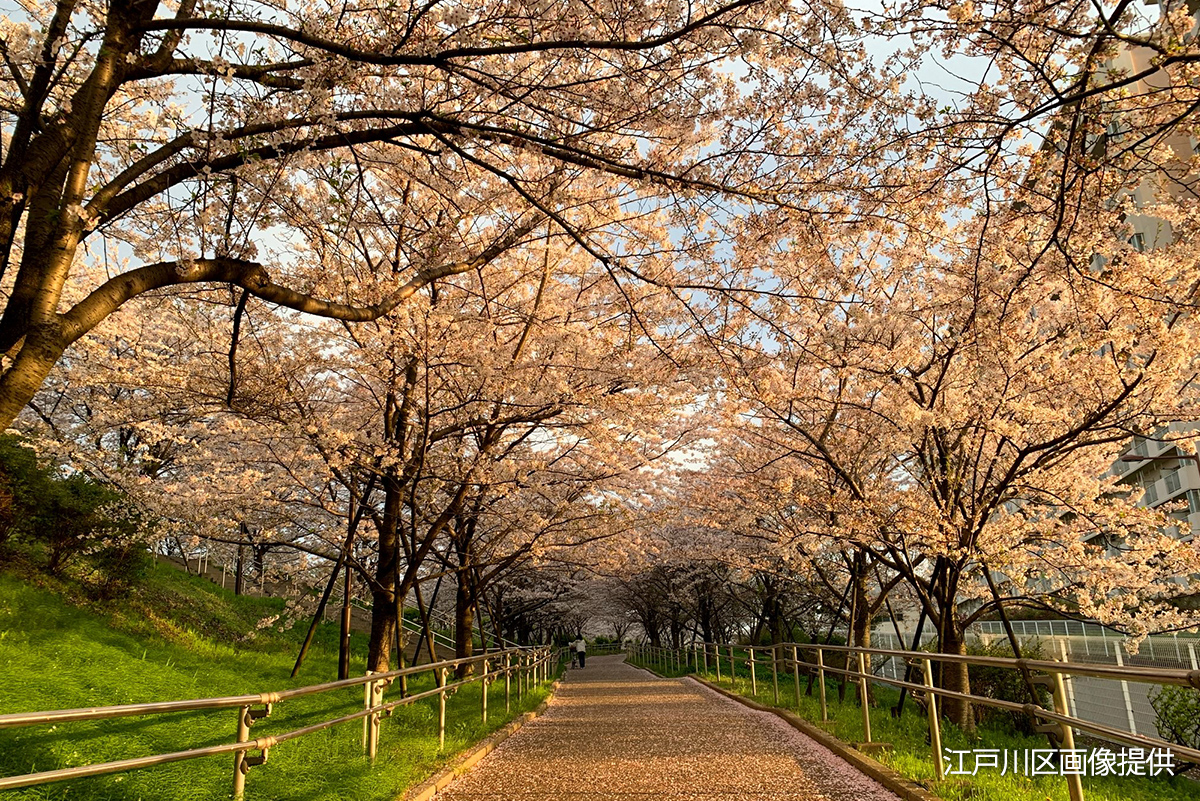
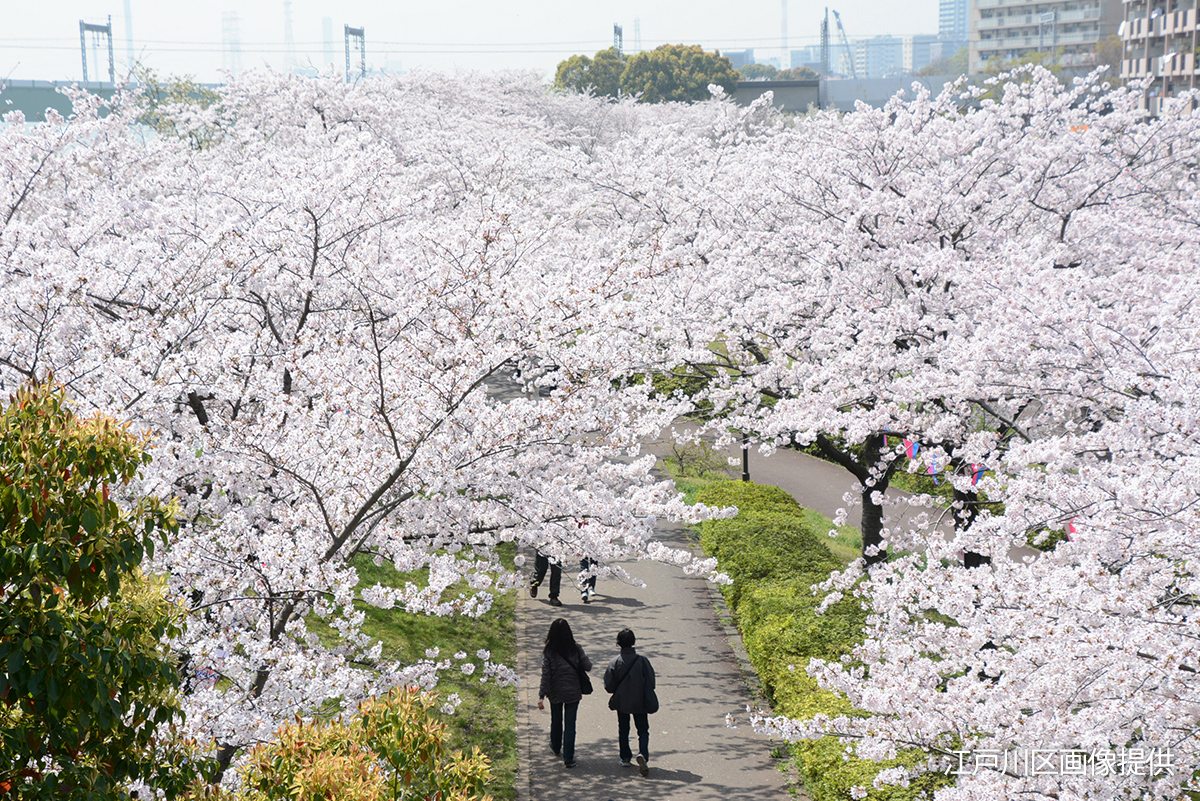 Area: Higashi-ojima (late March to early April)
Area: Higashi-ojima (late March to early April)
The Komatsugawa district of Edogawa City is a land of abundant water and greenery, surrounded by the Arakawa and Old Nakagawa rivers. In the area known as Komatsugawa Senbonzakura (meaning 1,000 cherry trees), cherry blossom trees line the banks of the Arakawa River for about 2 km. Someiyoshino cherry trees stand alongside Oshima-zakura and Yamazakura varieties. As the name Senbonzakura suggests, roughly a thousand sakura trees grow here, forming one of the largest groves in Tokyo. Close to Higashi-ojima Station on the Toei Shinjuku Line, the place is easily accessible. A little less crowded than other famous spots in the city, it is an ideal place to spend an unhurried time with Japan’s legendary blossom.
https://www.city.edogawa.tokyo.jp/e066/kuseijoho/gaiyo/shisetsuguide/bunya/k oendobutsuen/senbonsakura.html (Japanese version only)
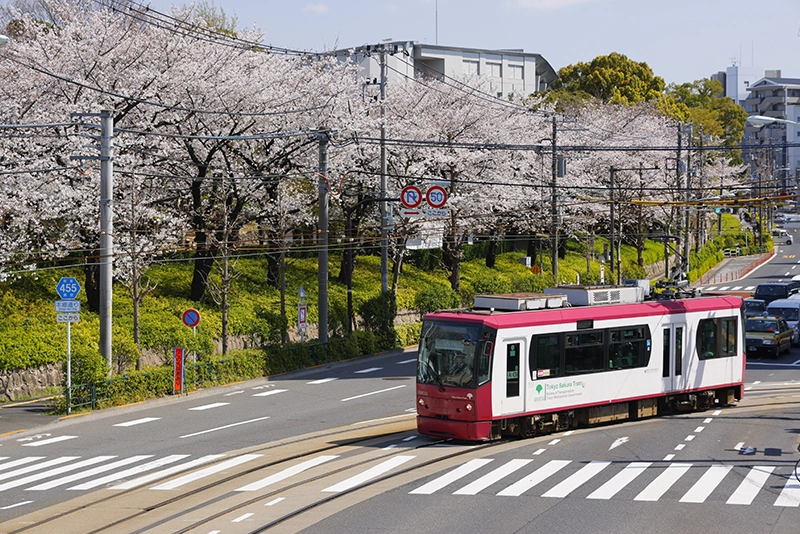
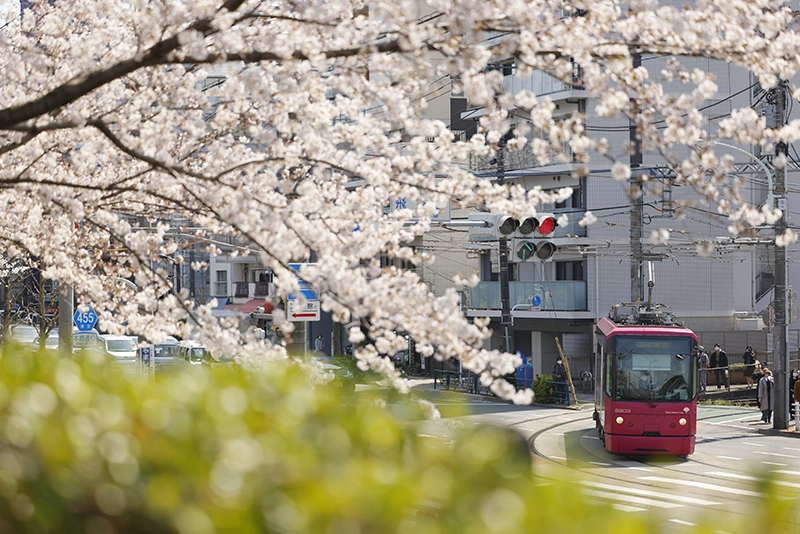
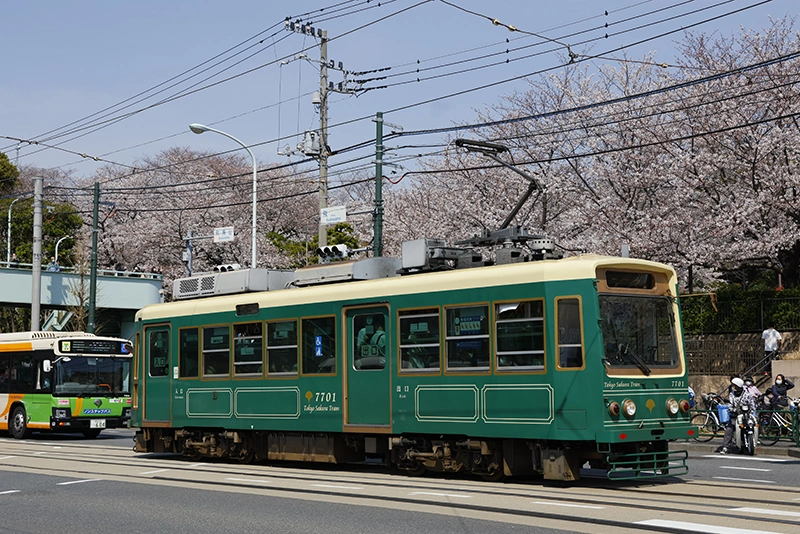
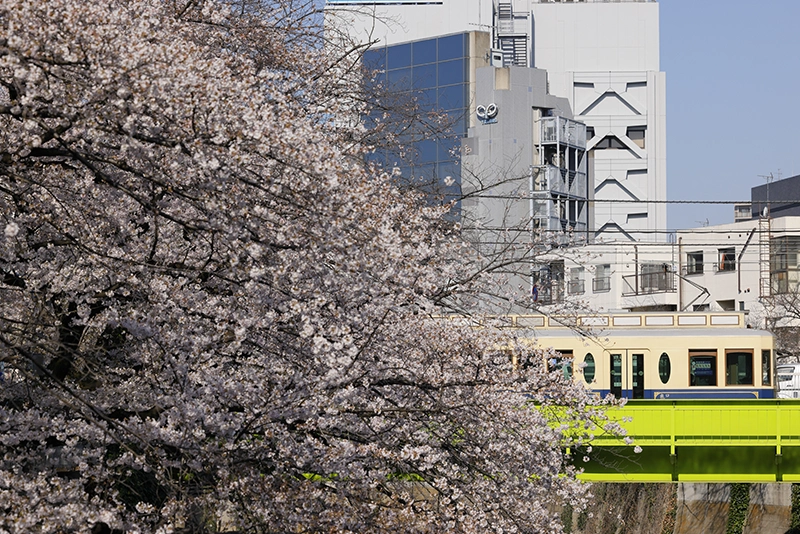 The Tokyo Sakura Tram (Toden Arakawa Line) is the sole survivor of Tokyo’s Toden streetcar system, running 12.2 km from Minowabashi to Waseda. The line earned its name from the many famous cherry blossom viewing spots along the route, such as Otonashi Shinsui Park and the row of cherry trees around Arakawa Amusement Park. Enjoy the floral scenery from the train windows near the Gakushuinshita and Omokagebashi stops. The sight of sakura springing to life intertwines with charming scenes of everyday life, from traditional townscapes to shotengai shopping streets, casts the hanami experience in a new light.
The Tokyo Sakura Tram (Toden Arakawa Line) is the sole survivor of Tokyo’s Toden streetcar system, running 12.2 km from Minowabashi to Waseda. The line earned its name from the many famous cherry blossom viewing spots along the route, such as Otonashi Shinsui Park and the row of cherry trees around Arakawa Amusement Park. Enjoy the floral scenery from the train windows near the Gakushuinshita and Omokagebashi stops. The sight of sakura springing to life intertwines with charming scenes of everyday life, from traditional townscapes to shotengai shopping streets, casts the hanami experience in a new light.
In the center of Asukayama Park, a legendary locale for sakura since the Edo period (1603-1868), is a thicket of Yaezakura blossoms which bloom until late April, peaking later than their Someiyoshino cousins.
https://toden-sakuratabi.jp/ (Japanese version only)
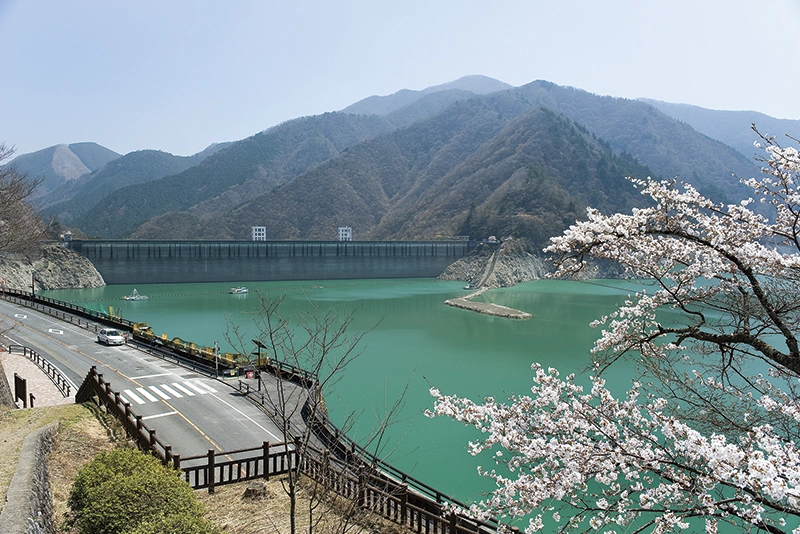
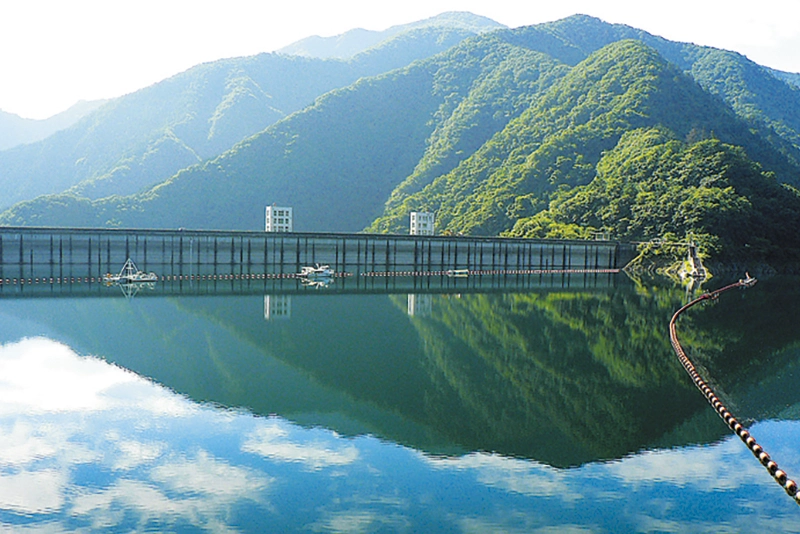
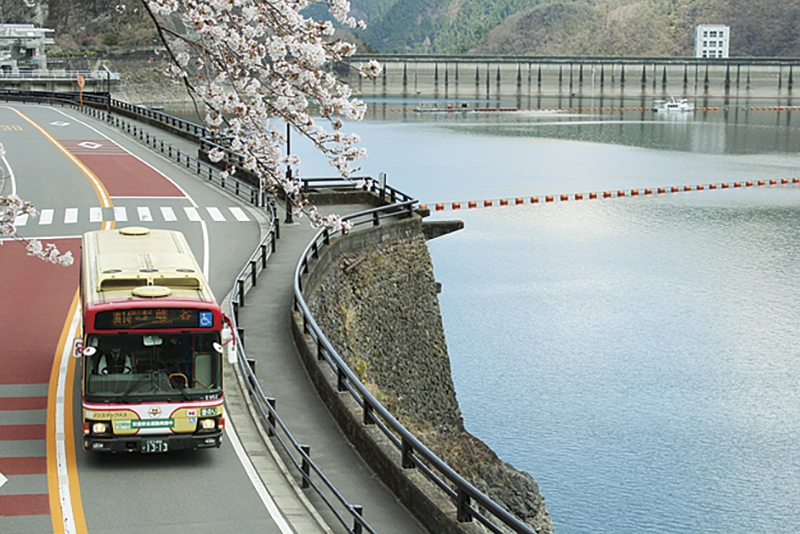
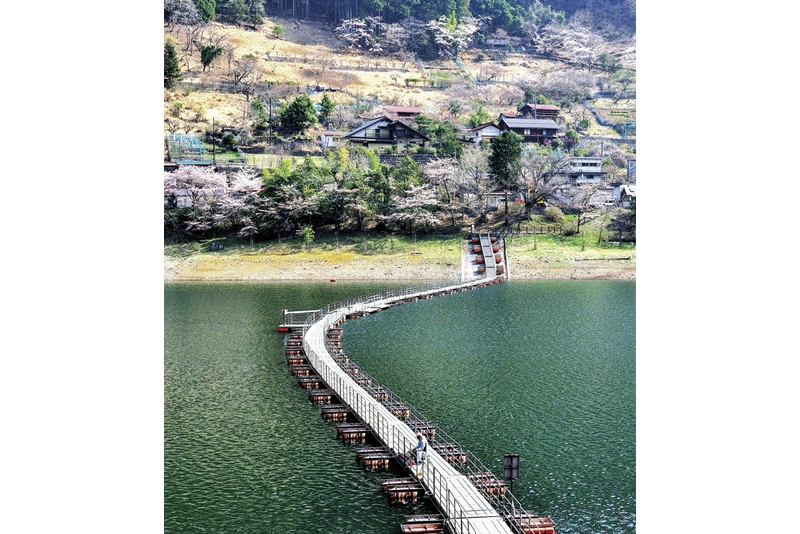 Area: Western Tama Area (early to late April)
Area: Western Tama Area (early to late April)
The Okutama area in western Tokyo offers open, spacious landscapes on a scale impossible to enjoy in the city center. Lake Okutama, also known as “Tokyo's water tank,” is a reservoir connected to the Ogochi Dam. Someiyoshino cherry trees bloom alongside wild sakura varieties among the roughly 4,000 trees that burgeon on the lakeside and mountain slopes. With lower temperatures than the city center, peak viewing periods usually last from early to late April. After catching the view of the mountainside painted in pink blossoms from the lake’s floating bridge, follow the hiking trail along the lakeshore. Amid this grand natural setting, the hanami experience takes on a quality unmatched in any urban counterpart.
https://www.ohtama.or.jp/sightseeing/316.html (Japanese version only)
To help make the most of this spectacular season, here are the best sakura spots in Tokyo, from age-old favorites to hidden gems.

1. Kiba Park


Kiba Park is renowned for the famous, early blooming variety of sakura known as Kawazu cherry blossoms. About 80 Kawazu cherry trees line the promenade along the Oyoko River in the park’s southeastern area. A deep pink hue and long viewing period set these blossoms apart. The flowers usually start to open in mid-February and stay in bloom until mid-March. Also, within the roughly 24-hectare park, about 240 Someiyoshino cherry trees reach their peak just as the Kawazu petals begin to fall. Be sure to find the right angle to fit TOKYO SKYTREE and the famed flowers in a single shot. With the Museum of Contemporary Art Tokyo and the retro vibes of the Monzen-nakacho neighborhood nearby, the area is perfect for a stroll before and after viewing the blossoms.
https://www.tokyo-park.or.jp/park/format/index020.html (Japanese version only)
2. Ueno Park






One of the city’s preeminent cherry blossom viewing spots, visited by 3.3 million people every season. The history of sakura in Ueno dates back to old times. The story is said to begin in the mid-17th century when Tokugawa Iemitsu, the 3rd Shogun of the Edo shogunate, transplanted cherry trees here from Yoshino in Nara Prefecture, a celebrated sakura spot of the day. From late March to early April, the blossoms in Ueno are lit up at night, drawing throngs of admirers. Among the roughly 1,200 cherry trees in the park, early blooming varieties can be enjoyed from the beginning of March.
The dark pink Kanzan Yaezakura (double cherry blossoms) species and other late blooming varieties are planted all around Shinobazu Pond. These large flowers are a sight to behold, with some having over 50 petals. Gazing at these pink floral clouds from a rowboat on the water is also highly enjoyable.
https://www.kensetsu.metro.tokyo.lg.jp/jimusho/toubuk/ueno/en_index.html
3. Showa Kinen Park





This vast park in Tokyo’s suburb of Tachikawa is home to around 1,500 cherry blossom trees within its 180-hectare grounds. Approximately half are of the Someiyoshino variety, with many large trees in the Cherry Blossom Garden over 50 years old, some with overhanging branches dangling bunches of blossoms right before your eyes. Next to this garden, a field of yellow “nanohana” (canola flowers) bloom around the same time. Someiyoshino are joined by 30 other varieties growing on the grounds, from early to late blooming types, with the combination stretching the hanami (cherry blossom viewing) season from mid-March to mid-April.
https://www.showakinen-koen.jp/guide-english/
4. Komatsugawa Senbonzakura




The Komatsugawa district of Edogawa City is a land of abundant water and greenery, surrounded by the Arakawa and Old Nakagawa rivers. In the area known as Komatsugawa Senbonzakura (meaning 1,000 cherry trees), cherry blossom trees line the banks of the Arakawa River for about 2 km. Someiyoshino cherry trees stand alongside Oshima-zakura and Yamazakura varieties. As the name Senbonzakura suggests, roughly a thousand sakura trees grow here, forming one of the largest groves in Tokyo. Close to Higashi-ojima Station on the Toei Shinjuku Line, the place is easily accessible. A little less crowded than other famous spots in the city, it is an ideal place to spend an unhurried time with Japan’s legendary blossom.
https://www.city.edogawa.tokyo.jp/e066/kuseijoho/gaiyo/shisetsuguide/bunya/k oendobutsuen/senbonsakura.html (Japanese version only)
5. Along the Tokyo Sakura Tram (late March to late April)




In the center of Asukayama Park, a legendary locale for sakura since the Edo period (1603-1868), is a thicket of Yaezakura blossoms which bloom until late April, peaking later than their Someiyoshino cousins.
https://toden-sakuratabi.jp/ (Japanese version only)
6. Lake Okutama




The Okutama area in western Tokyo offers open, spacious landscapes on a scale impossible to enjoy in the city center. Lake Okutama, also known as “Tokyo's water tank,” is a reservoir connected to the Ogochi Dam. Someiyoshino cherry trees bloom alongside wild sakura varieties among the roughly 4,000 trees that burgeon on the lakeside and mountain slopes. With lower temperatures than the city center, peak viewing periods usually last from early to late April. After catching the view of the mountainside painted in pink blossoms from the lake’s floating bridge, follow the hiking trail along the lakeshore. Amid this grand natural setting, the hanami experience takes on a quality unmatched in any urban counterpart.
https://www.ohtama.or.jp/sightseeing/316.html (Japanese version only)
Notice: Information as of December 2023.





